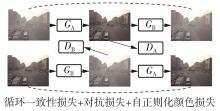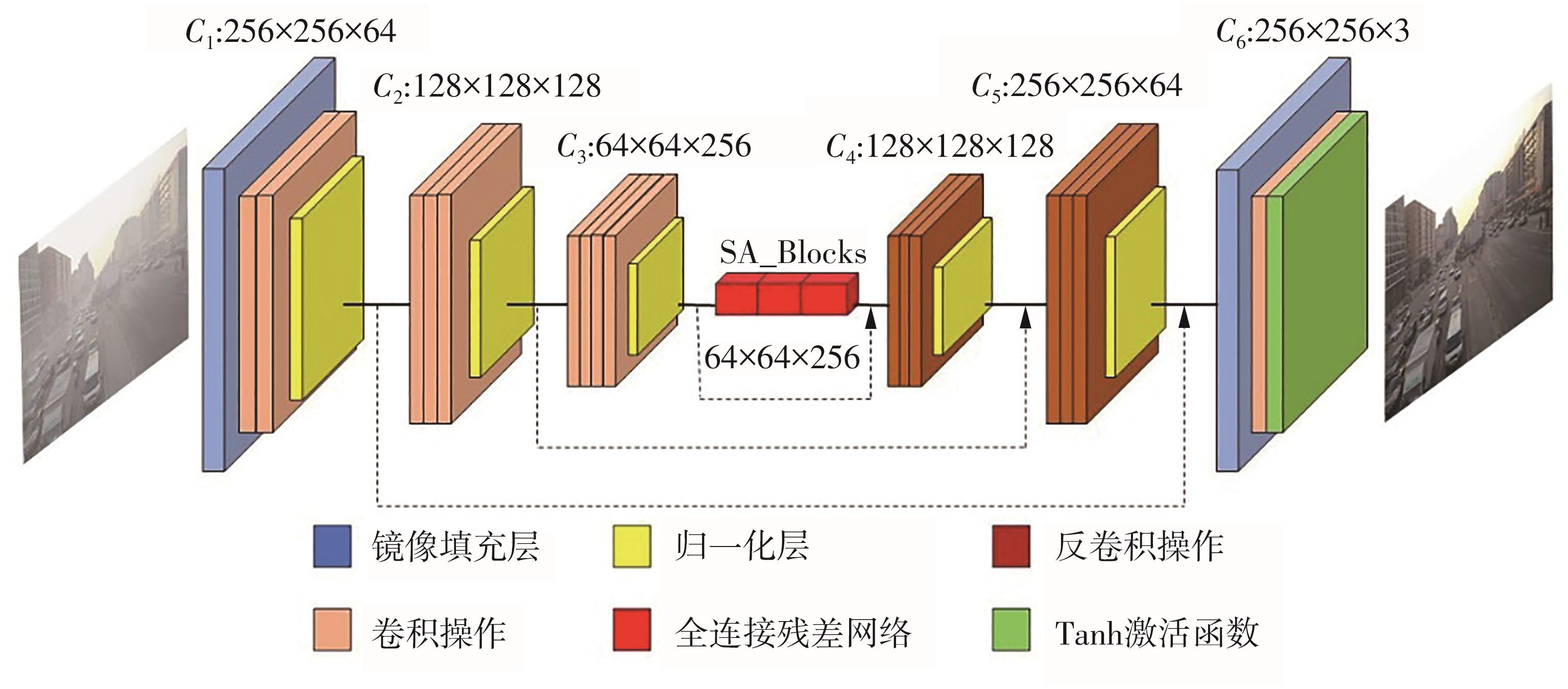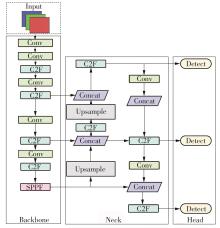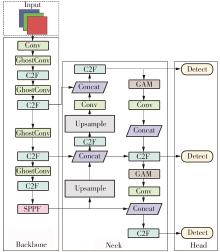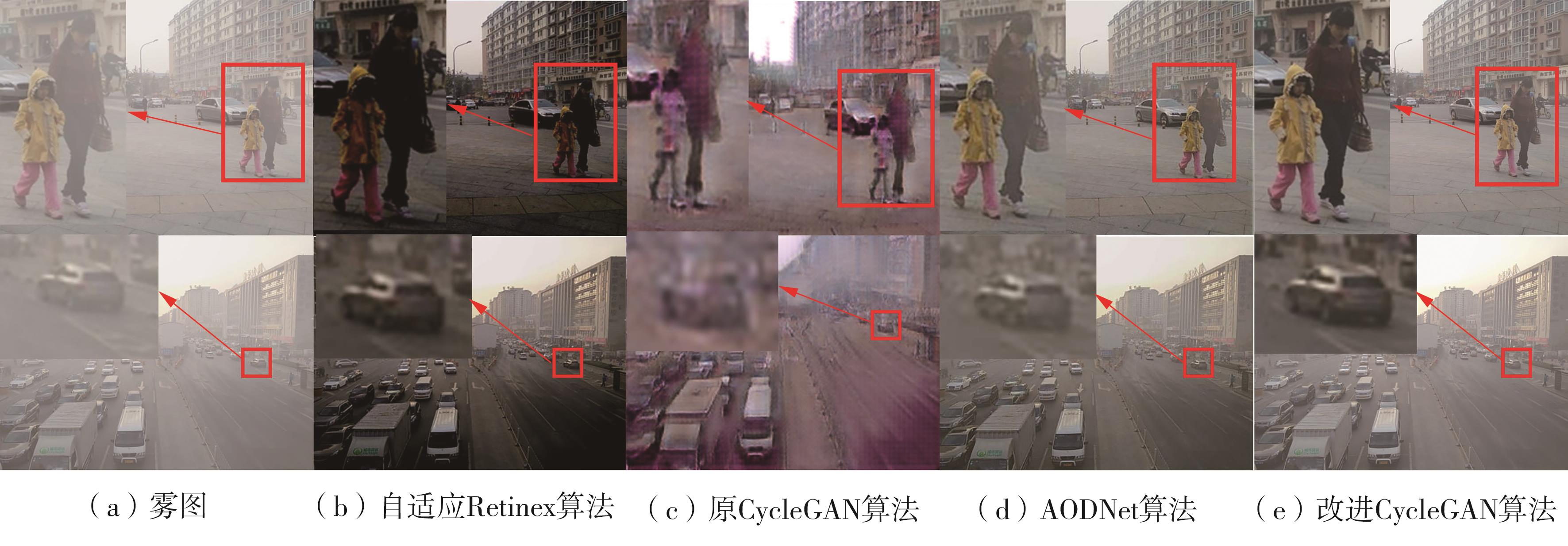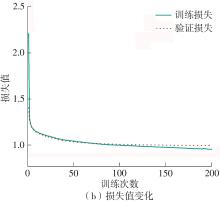Journal of South China University of Technology(Natural Science Edition) ›› 2025, Vol. 53 ›› Issue (2): 48-57.doi: 10.12141/j.issn.1000-565X.240225
• Traffic Safety • Previous Articles Next Articles
Foggy Road Environment Perception Algorithm Based on an Improved CycleGAN and YOLOv8
YUE Yongheng, LEI Wenpeng
- School of Civil Engineering and Transportation,Northeast Forestry University,Harbin 150040,Heilongjiang,China
-
Received:2024-05-09Online:2025-02-25Published:2025-02-03 -
About author:岳永恒(1973—),男,博士,副教授,主要从事交通安全及控制理论及应用研究。E-mail: yueyyh@126.com -
Supported by:the National Natural Science Foundation of China(62173107);the National Automobile Accident In-Depth Investigation System Funding Project(NAIS-ZL-ZHGL-2020018);the Key R & D Program of Heilongjiang Province(JD22A014)
CLC Number:
Cite this article
YUE Yongheng, LEI Wenpeng. Foggy Road Environment Perception Algorithm Based on an Improved CycleGAN and YOLOv8[J]. Journal of South China University of Technology(Natural Science Edition), 2025, 53(2): 48-57.
share this article
Table 5
Experiment compare results"
| 算法 | PA/% | PM/% | R/% | vFPS/(帧·s-1) | 参数量/106 | |||||
|---|---|---|---|---|---|---|---|---|---|---|
| Person | Car | Bus | Truck | Bike | Motor | |||||
| SSD | 19.1 | 45.0 | 36.4 | 29.9 | 25.9 | 22.2 | 29.7 | 30.0 | 79.13 | 26.29 |
| Faster R-CNN | 41.0 | 70.8 | 52.5 | 46.1 | 25.7 | 24.3 | 43.4 | 41.6 | 43.31 | 137.10 |
| YOLOv5 | 41.3 | 69.2 | 50.6 | 45.2 | 25.4 | 26.1 | 43.0 | 38.4 | 86.95 | 1.90 |
| YOLOv8 | 48.5 | 73.6 | 53.2 | 49.8 | 29.8 | 25.1 | 46.6 | 42.9 | 90.91 | 3.20 |
| 改进YOLOv8 | 48.0 | 73.0 | 56.6 | 48.4 | 30.5 | 29.7 | 47.7 | 44.7 | 81.30 | 3.70 |
| 1 | 彭湃,耿可可,王子威 .智能汽车环境感知方法综述[J].机械工程学报,2023,59(20):281-303. |
| PENG Pai, GENG Keke, WANG Ziwei .Overview of environmental perception methods for intelligent vehicles [J]Journal of Mechanical Engineering,2023,59(20):281-303. | |
| 2 | 赖镜安,陈紫强,孙宗威,等 .基于YOLOv5的轻量级雾天目标检测方法[J].计算机工程与应用,2024,60(6):78-88. |
| LAI Jing’an, CHEN Ziqiang, SUN Zongwei,et al .Lightweight foggy target detection method based on YOLOv5[J].Computer Engineering and Applications,2024,60(6):78-88. | |
| 3 | CHOW T Y, LEE K H, CHAN K L .Detection of targets in road scene images enhanced using conditional GAN-based dehazing model[J].Applied Sciences,2023,13(9):5326. |
| 4 | LI B, PENG X, WANG Z,et al .An all-in-one network for dehazing and beyond[J].arXiv Preprint arXiv:1707.06543,2017. |
| 5 | ZHANG X, DONG H, HU Z,et al .Gated fusion network for degraded image super resolution[J].International Journal of Computer Vision,2020,128:1699-1721. |
| 6 | ENGIN D, GENÇ A, KEMAL E H .Cycle-dehaze:Enhanced cyclegan for single image dehazing[C]∥Proceedings of the IEEE Conference on Computer Vision and Pattern Recognition Workshops.Salt Lake City :IEEE,2018:825-833. |
| 7 | YAN B, YANG Z, SUN H,et al .ADE-CycleGAN:a detail enhanced image dehazing CycleGAN network[J].Sensors,2023,23(6):3294. |
| 8 | GIRSHICK R, DONAHUE J, DARRELL T,et al .Rich feature hierarchies for accurate object detection and semantic segmentation[C]∥Proceedings of the IEEE Conference on Computer Vision and Pattern Recognition. Columbus:IEEE, 2014:580-587. |
| 9 | REN S, HE K, GIRSHICK R,et al .Faster r-cnn:towards real-time object detection with region proposal networks[J].Advances in Neural Information Processing Systems,2017,39(6):1137-1149. |
| 10 | REDMON J, DIVVALA S, GIRSHICK R,et al .You only look once:unified,real-time object detection[C]∥Proceedings of the IEEE conference on Computer Vision and Pattern Recognition.Las Ve-gas:IEEE,2016:779-788. |
| 11 | HAN K, WANG Y, TIAN Q,et al .Ghostnet:more features from cheap operations[C]∥Proceedings of the IEEE/CVF Conference on Computer Vision and Pattern Recognition.Seattle:IEEE,2020:1580-1589. |
| 12 | WU T, KU T, ZHANG H. Research for image caption based on global attention mechanism[J]∥Second Target Recognition and Artificial Intelligence Summit Forum,2020,11427:679-684. |
| 13 | TONG Z, CHEN Y, XU Z,et al .Wise-IoU:bounding box regression loss with dynamic focusing mechanism[J].arXiv Preprint arXiv:2301.10051,2023. |
| 14 | ZHENG Z, WANG P, LIU W,et al .Distance-IoU loss:faster and better learning for bounding box regression[C]∥Proceedings of the AAAI conference on artificial intelligence.New York:IEEE,2020:12993-13000. |
| 15 | GOODFELLOW I, POUGET-ABADIE J, MIRZA M,et al .Generative adversarial nets[J].Advances in Neural Information Processing Systems,2014,27:139-144. |
| 16 | WANG C, MENG Z, XIE R,et al .A single image dehazing algorithm based on cycle-gan[C]∥Proceedings of the 2019 International Conference on Robotics,Intelligent Control and Artificial Intelligence.Long Beach:IEEE,2019:247-251. |
| 17 | VASWANI A, SHAZEER N, PARMAR N,et al .Attention is all you need[J].Advances in Neural Information Processing Systems,2017,30:6000-6010. |
| 18 | HE K, ZHANG X, REN S,et al .Spatial pyramid pooling in deep convolutional networks for visual recognition[J].IEEE Transactions on Pattern Analysis and Machine Intelligence,2015,37(9):1904-1916. |
| 19 | LIU S, QI L, QIN H,et al .Path aggregation network for instance segmentation[C]∥Proceedings of the IEEE Conference on Computer Vision and Pattern Recognition. Salt Lake City:IEEE,2018:8759-8768. |
| 20 | LI B, REN W, FU D,et al .Benchmarking single-image dehazing and beyond[J].IEEE Transactions on Image Processing,2018,28(1):492-505. |
| 21 | YU F, CHEN H, WANG X,et al .Bdd100k:a diverse driving dataset for heterogeneous multitask learning[C]∥Proceedings of the IEEE/CVF Conference on Computer Vision and Pattern Recognition.Seattle:IEEE, 2020:2636-2645. |
| 22 | WEI C, WANG W, YANG W,et al .Deep retinex decomposition for low-light enhancement[J].arXiv Preprint arXiv:1808.04560,2018. |
| 23 | LIU W, ANGUELOV D, ERHAN D,et al .Ssd:single shot multibox detector[C]∥ Proceeding of the Computer Vision-ECCV 2016:14th European Conference.Amsterdam:Springer International Publishing,2016:21-37. |
| [1] | LUO Yutao, MAO Haojie. Single-Stage Object Detection Network with Enhanced Pillar Feature Encoding [J]. Journal of South China University of Technology(Natural Science Edition), 2025, 53(3): 1-11. |
| [2] | HUANG Yangyang, XU Yong, XI Xing, et al. A Novel Approach to Addressing Label Bias in Open-World Object Detection [J]. Journal of South China University of Technology(Natural Science Edition), 2025, 53(3): 12-19. |
| [3] | YUE Yongheng, NING Ruihou. Intelligent Vehicle Object Detection Algorithm Based on Lightweight CenterNet [J]. Journal of South China University of Technology(Natural Science Edition), 2024, 52(8): 45-55. |
| [4] | GUO Enqiang, FU Xinsha. Dropped Object Detection Method Based on Feature Similarity Learning [J]. Journal of South China University of Technology(Natural Science Edition), 2023, 51(6): 30-41. |
| [5] | DU Qiliang, XIANG Zhaoyi, TIAN Lianfang. Real Time Statistics Method of Escalator Passenger Flow for Embedded Devices [J]. Journal of South China University of Technology(Natural Science Edition), 2022, 50(6): 60-70. |
| [6] | YAO Qiangqiang, TIAN Ying, WANG Shengyuan, et al. Research on Path Tracking Control Strategy of Intelligent Vehicles Based on Force Drive [J]. Journal of South China University of Technology(Natural Science Edition), 2022, 50(2): 33-41,57. |
| [7] | YI Qingming, LÜ Renyi, SHI Min, et al. Lightweight Object Detection Combined with Multi-Scale Dilated-Convolution and Multi-Scale Deconvolution [J]. Journal of South China University of Technology(Natural Science Edition), 2022, 50(12): 41-48. |
| [8] | FU Xinsha, PENG Jinhui, ZENG Yanjie, et al. Road Markings Condition Assessment Method for Intelligent Vehicles [J]. Journal of South China University of Technology(Natural Science Edition), 2022, 50(11): 1-13. |
| [9] | TAN Guang LI Changhao ZHAN Zhaohuan. Adaptive Scheduling Algorithm for Object Detection and Tracking Based on Device-Cloud Collaboration [J]. Journal of South China University of Technology (Natural Science Edition), 2021, 49(7): 86-93. |
| [10] | LI Bo RAO Haobo. Salient Object Detection Based on Feature Enhancement in Complex Scene [J]. Journal of South China University of Technology (Natural Science Edition), 2021, 49(11): 135-144. |
| [11] | LIU Weiming, WEN Junrui, ZHENG Zhongxing, et al. DifferentNet: Neural Network for Foreign Objects Foreground Detection in Metro [J]. Journal of South China University of Technology(Natural Science Edition), 2021, 49(10): 11-21,40. |
| [12] | WU Qiuxia, LI Lingmin. 3D Object Detection Based on Point Cloud Bird's Eye View Remapping [J]. Journal of South China University of Technology(Natural Science Edition), 2021, 49(1): 39-46. |
| [13] | ZENG Dequan, YU Zhuoping, XIONG Lu, et al. Intelligent Vehicle Obstacle Avoidance Trajectory Planning in Structured Road Based on Analytic Hierarchy Process [J]. Journal of South China University of Technology (Natural Science Edition), 2020, 48(7): 65-75. |
| [14] |
LIU Jieping YANG Yezhang WEI Gang .
A Fast Single Image Dehazing Algorithm Based on Dark Channel Prior
|
| [15] | WEI Weibo LI Shuai PAN Zhenkuan HOU Guojia ZHAO Shengnan. Single Color Image Dehazing Based on the Basis of H-NL-MTV Model [J]. Journal of South China University of Technology (Natural Science Edition), 2018, 46(12): 34-41,50. |
| Viewed | ||||||
|
Full text |
|
|||||
|
Abstract |
|
|||||
